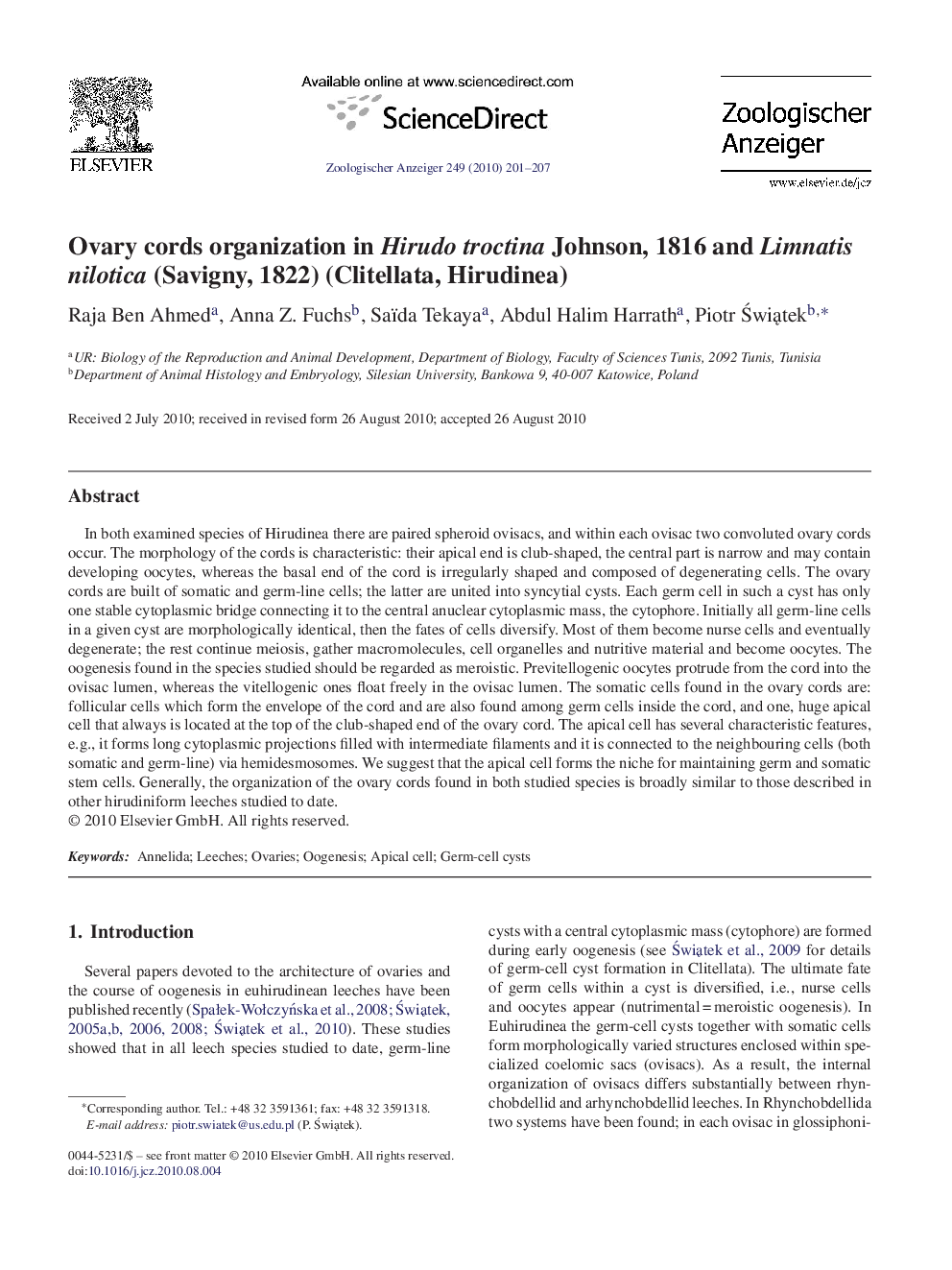| کد مقاله | کد نشریه | سال انتشار | مقاله انگلیسی | نسخه تمام متن |
|---|---|---|---|---|
| 2790857 | 1568623 | 2010 | 7 صفحه PDF | دانلود رایگان |

In both examined species of Hirudinea there are paired spheroid ovisacs, and within each ovisac two convoluted ovary cords occur. The morphology of the cords is characteristic: their apical end is club-shaped, the central part is narrow and may contain developing oocytes, whereas the basal end of the cord is irregularly shaped and composed of degenerating cells. The ovary cords are built of somatic and germ-line cells; the latter are united into syncytial cysts. Each germ cell in such a cyst has only one stable cytoplasmic bridge connecting it to the central anuclear cytoplasmic mass, the cytophore. Initially all germ-line cells in a given cyst are morphologically identical, then the fates of cells diversify. Most of them become nurse cells and eventually degenerate; the rest continue meiosis, gather macromolecules, cell organelles and nutritive material and become oocytes. The oogenesis found in the species studied should be regarded as meroistic. Previtellogenic oocytes protrude from the cord into the ovisac lumen, whereas the vitellogenic ones float freely in the ovisac lumen. The somatic cells found in the ovary cords are: follicular cells which form the envelope of the cord and are also found among germ cells inside the cord, and one, huge apical cell that always is located at the top of the club-shaped end of the ovary cord. The apical cell has several characteristic features, e.g., it forms long cytoplasmic projections filled with intermediate filaments and it is connected to the neighbouring cells (both somatic and germ-line) via hemidesmosomes. We suggest that the apical cell forms the niche for maintaining germ and somatic stem cells. Generally, the organization of the ovary cords found in both studied species is broadly similar to those described in other hirudiniform leeches studied to date.
Journal: Zoologischer Anzeiger - A Journal of Comparative Zoology - Volume 249, Issues 3–4, November 2010, Pages 201–207